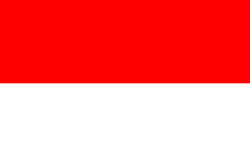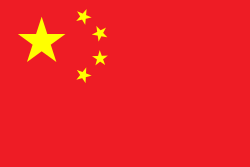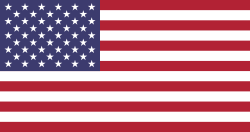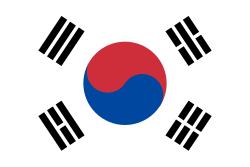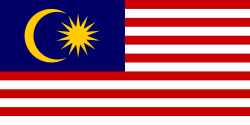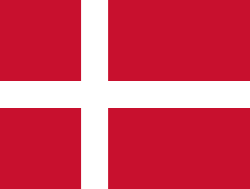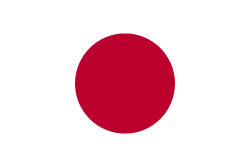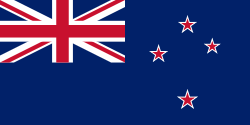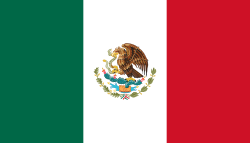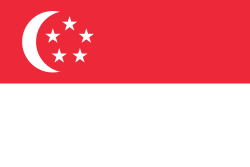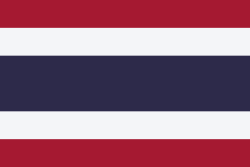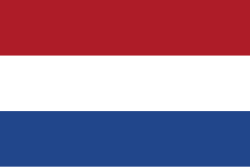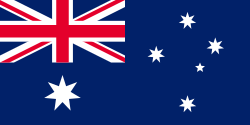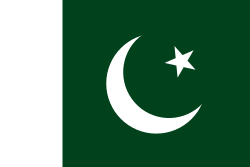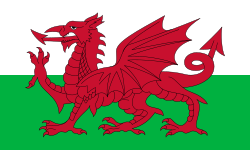Japan Open 1991
Die Japan Open 1991 im Badminton fanden vom 16. bis zum 21. Januar 1991 in Yoyogi, Tokio, statt.
Sieger und Platzierte
| Disziplin | Gold | Silber | Bronze |
|---|---|---|---|
| Herreneinzel | |||
| Dameneinzel | |||
| Herrendoppel | |||
| Damendoppel | |||
| Mixed | |||
Finalergebnisse
| Disziplin | Sieger | Finalist | Ergebnis |
|---|---|---|---|
| Herreneinzel | 12-15, 15-4, 15-7 | ||
| Dameneinzel | 11-3, 11-6 | ||
| Herrendoppel | 15-4, Aufgabe | ||
| Damendoppel | 6-15, 18-15, 15-9 | ||
| Mixed | 15-7, 15-8 |
Ergebnisse
Herreneinzel Qualifikation
 Lin Yuan-dien –
Lin Yuan-dien –  Simeon Ramores: 15-7 / 15-0
Simeon Ramores: 15-7 / 15-0 Kazuhiro Shimogami –
Kazuhiro Shimogami –  Kerrin Harrison: 1-15 / 15-10 / 15-7
Kerrin Harrison: 1-15 / 15-10 / 15-7 Seiichi Watanabe –
Seiichi Watanabe –  Antonio Mance jr.: 15-4 / 15-6
Antonio Mance jr.: 15-4 / 15-6 Fernando de la Torre –
Fernando de la Torre –  You Kok Kiong: 15-9 / 15-8
You Kok Kiong: 15-9 / 15-8 Chow Kin Man –
Chow Kin Man –  Anthony Ave: 7-15 / 18-13 / 15-4
Anthony Ave: 7-15 / 18-13 / 15-4 Tsutomu Kinjo –
Tsutomu Kinjo –  Ramjee B. Shrestha: 15-1 / 15-9
Ramjee B. Shrestha: 15-1 / 15-9 Thomas Reidy –
Thomas Reidy –  Ricardo Santos: 15-2 / 15-4
Ricardo Santos: 15-2 / 15-4 Tomomasa Otani –
Tomomasa Otani –  Martin Lee Millar: 15-2 / 15-3
Martin Lee Millar: 15-2 / 15-3 Eishi Kibune –
Eishi Kibune –  Naresh Bahadur Singh: 15-6 / 15-2
Naresh Bahadur Singh: 15-6 / 15-2 Kazuhiko Hamakita –
Kazuhiko Hamakita –  Lin Yuan-dien: 15-6 / 10-15 / 18-15
Lin Yuan-dien: 15-6 / 10-15 / 18-15 Abhichat Khongchan –
Abhichat Khongchan –  Koh Leng Kang: 15-11 / 15-5
Koh Leng Kang: 15-11 / 15-5 Seiichi Watanabe –
Seiichi Watanabe –  Lin Liang-chun: 15-2 / 15-5
Lin Liang-chun: 15-2 / 15-5 Chiang Hong-li –
Chiang Hong-li –  Fernando de la Torre: 15-7 / 15-10
Fernando de la Torre: 15-7 / 15-10 Tsutomu Kinjo –
Tsutomu Kinjo –  Chow Kin Man: 15-9 / 15-4
Chow Kin Man: 15-9 / 15-4 Thomas Reidy –
Thomas Reidy –  Akihiko Yamamoto: 15-3 / 15-7
Akihiko Yamamoto: 15-3 / 15-7 Tomomasa Otani –
Tomomasa Otani –  Wu Jiunn-shong: 8-15 / 18-15 / 15-2
Wu Jiunn-shong: 8-15 / 18-15 / 15-2 Eishi Kibune –
Eishi Kibune –  Ng Liang Hua: 5-15 / 15-8 / 15-3
Ng Liang Hua: 5-15 / 15-8 / 15-3 Kazuhiko Hamakita –
Kazuhiko Hamakita –  Kazuhiro Honda: 15-9 / 15-11
Kazuhiro Honda: 15-9 / 15-11 Kazuhiro Shimogami –
Kazuhiro Shimogami –  Abhichat Khongchan: 15-13 / 15-0
Abhichat Khongchan: 15-13 / 15-0 Seiichi Watanabe –
Seiichi Watanabe –  Jessie Alonzo: 15-3 / 18-15
Jessie Alonzo: 15-3 / 18-15 Tsutomu Kinjo –
Tsutomu Kinjo –  Chiang Hong-li: 15-10 / 15-8
Chiang Hong-li: 15-10 / 15-8 Thomas Reidy –
Thomas Reidy –  Teeranun Chiangtha: 15-9 / 14-17 / 15-8
Teeranun Chiangtha: 15-9 / 14-17 / 15-8 Tomomasa Otani –
Tomomasa Otani –  Eishi Kibune: 15-2 / 15-3
Eishi Kibune: 15-2 / 15-3
Herreneinzel
 Ardy Wiranata –
Ardy Wiranata –  Niroshan Wijekoon: 15-1 / 15-9
Niroshan Wijekoon: 15-1 / 15-9 Liu Jun –
Liu Jun –  Kazuhiko Hamakita: 15-2 / 15-6
Kazuhiko Hamakita: 15-2 / 15-6 Liu En-hung –
Liu En-hung –  Vacharapan Khamthong: 15-12 / 15-3
Vacharapan Khamthong: 15-12 / 15-3 Jens Peter Nierhoff –
Jens Peter Nierhoff –  Benny Lee: 15-11 / 15-4
Benny Lee: 15-11 / 15-4 Morten Frost –
Morten Frost –  Bryan Blanshard: 15-3 / 15-3
Bryan Blanshard: 15-3 / 15-3 Pawel Uwarow –
Pawel Uwarow –  Kazuhiro Shimogami: 15-3 / 15-10
Kazuhiro Shimogami: 15-3 / 15-10 Steve Butler –
Steve Butler –  Chan Wing Kit: 15-8 / 15-8
Chan Wing Kit: 15-8 / 15-8 Jeroen van Dijk –
Jeroen van Dijk –  Masahiro Ito: 12-15 / 17-14 / 15-8
Masahiro Ito: 12-15 / 17-14 / 15-8 Foo Kok Keong –
Foo Kok Keong –  Akihiro Kishida: 15-1 / 15-11
Akihiro Kishida: 15-1 / 15-11 Yu Lizhi –
Yu Lizhi –  Peter Knowles: 15-10 / 6-15 / 15-7
Peter Knowles: 15-10 / 6-15 / 15-7 Bambang Suprianto –
Bambang Suprianto –  Lin Chian-chow: 15-11 / 15-10
Lin Chian-chow: 15-11 / 15-10 Thomas Stuer-Lauridsen –
Thomas Stuer-Lauridsen –  Ahn Jae-chang: 15-4 / 15-2
Ahn Jae-chang: 15-4 / 15-2 Fung Permadi –
Fung Permadi –  Pulsak Thewarangsee: 15-1 / 15-9
Pulsak Thewarangsee: 15-1 / 15-9 Hiroki Eto –
Hiroki Eto –  Wong Wai Lap: 15-10 / 15-13
Wong Wai Lap: 15-10 / 15-13 Chris Bruil –
Chris Bruil –  Seiichi Watanabe: 17-15 / 15-12
Seiichi Watanabe: 17-15 / 15-12 Peter Axelsson –
Peter Axelsson –  Hamid Khan: 15-11 / 7-15 / 15-13
Hamid Khan: 15-11 / 7-15 / 15-13 Jaimie Dawson –
Jaimie Dawson –  Wong Tat Meng: 15-7 / 15-13
Wong Tat Meng: 15-7 / 15-13 Claus Thomsen –
Claus Thomsen –  Tsutomu Kinjo: 15-11 / 15-11
Tsutomu Kinjo: 15-11 / 15-11 Lee Mou-chou –
Lee Mou-chou –  Pierre Pelupessy: 15-12 / 7-15 / 15-8
Pierre Pelupessy: 15-12 / 7-15 / 15-8 Joko Suprianto –
Joko Suprianto –  Lee Kwang-jin: 15-11 / 15-1
Lee Kwang-jin: 15-11 / 15-1 Hermawan Susanto –
Hermawan Susanto –  Chris Jogis: 15-8 / 15-12
Chris Jogis: 15-8 / 15-12 Chen Rong –
Chen Rong –  Yasumasa Tsujita: 15-2 / 15-7
Yasumasa Tsujita: 15-2 / 15-7 Glenn Stewart –
Glenn Stewart –  Stellan Österberg: 15-9 / 1-15 / 15-12
Stellan Österberg: 15-9 / 1-15 / 15-12 Poul-Erik Høyer Larsen –
Poul-Erik Høyer Larsen –  Takahiro Suka: 15-4 / 15-8
Takahiro Suka: 15-4 / 15-8 Darren Hall –
Darren Hall –  Guo Huan-Wen: 15-10 / 17-14
Guo Huan-Wen: 15-10 / 17-14 Andrei Antropow –
Andrei Antropow –  Thomas Reidy: 15-3 / 15-7
Thomas Reidy: 15-3 / 15-7 Pontus Jäntti –
Pontus Jäntti –  Fernando de la Torre: 15-9 / 15-5
Fernando de la Torre: 15-9 / 15-5 Alan Budikusuma –
Alan Budikusuma –  Tse Bun: 15-10 / 15-12
Tse Bun: 15-10 / 15-12 Ib Frederiksen –
Ib Frederiksen –  Chan Kin Ngai: 15-3 / 15-6
Chan Kin Ngai: 15-3 / 15-6 Sompol Kukasemkij –
Sompol Kukasemkij –  Hideaki Motoyama: 15-2 / 15-9
Hideaki Motoyama: 15-2 / 15-9 Jens Olsson –
Jens Olsson –  Tomomasa Otani: 13-18 / 15-4 / 15-1
Tomomasa Otani: 13-18 / 15-4 / 15-1 Wu Wenkai –
Wu Wenkai –  Alex Meijer: w.o.
Alex Meijer: w.o. Ardy Wiranata –
Ardy Wiranata –  Liu Jun: 15-10 / 15-9
Liu Jun: 15-10 / 15-9 Jens Peter Nierhoff –
Jens Peter Nierhoff –  Liu En-hung: 15-5 / 15-7
Liu En-hung: 15-5 / 15-7 Morten Frost –
Morten Frost –  Pawel Uwarow: 15-2 / 15-2
Pawel Uwarow: 15-2 / 15-2 Steve Butler –
Steve Butler –  Jeroen van Dijk: 15-5 / 12-15 / 15-1
Jeroen van Dijk: 15-5 / 12-15 / 15-1 Foo Kok Keong –
Foo Kok Keong –  Yu Lizhi: 10-15 / 15-12 / 15-6
Yu Lizhi: 10-15 / 15-12 / 15-6 Thomas Stuer-Lauridsen –
Thomas Stuer-Lauridsen –  Bambang Suprianto: 7-15 / 15-5 / 15-9
Bambang Suprianto: 7-15 / 15-5 / 15-9 Fung Permadi –
Fung Permadi –  Hiroki Eto: 15-6 / 15-3
Hiroki Eto: 15-6 / 15-3 Peter Axelsson –
Peter Axelsson –  Chris Bruil: 12-15 / 15-8 / 15-8
Chris Bruil: 12-15 / 15-8 / 15-8 Claus Thomsen –
Claus Thomsen –  Jaimie Dawson: 15-6 / 15-5
Jaimie Dawson: 15-6 / 15-5 Joko Suprianto –
Joko Suprianto –  Lee Mou-chou: 15-2 / 11-15 / 15-5
Lee Mou-chou: 15-2 / 11-15 / 15-5 Hermawan Susanto –
Hermawan Susanto –  Chen Rong: 15-12 / 15-6
Chen Rong: 15-12 / 15-6 Poul-Erik Høyer Larsen –
Poul-Erik Høyer Larsen –  Glenn Stewart: 18-16 / 15-8
Glenn Stewart: 18-16 / 15-8 Darren Hall –
Darren Hall –  Andrei Antropow: 15-7 / 15-8
Andrei Antropow: 15-7 / 15-8 Alan Budikusuma –
Alan Budikusuma –  Pontus Jäntti: 15-5 / 15-6
Pontus Jäntti: 15-5 / 15-6 Ib Frederiksen –
Ib Frederiksen –  Sompol Kukasemkij: 15-13 / 15-3
Sompol Kukasemkij: 15-13 / 15-3 Wu Wenkai –
Wu Wenkai –  Jens Olsson: 15-12 / 15-4
Jens Olsson: 15-12 / 15-4 Ardy Wiranata –
Ardy Wiranata –  Jens Peter Nierhoff: 15-4 / 15-4
Jens Peter Nierhoff: 15-4 / 15-4 Morten Frost –
Morten Frost –  Steve Butler: 15-7 / 15-1
Steve Butler: 15-7 / 15-1 Thomas Stuer-Lauridsen –
Thomas Stuer-Lauridsen –  Foo Kok Keong: 17-15 / 15-11
Foo Kok Keong: 17-15 / 15-11 Fung Permadi –
Fung Permadi –  Peter Axelsson: 15-3 / 15-3
Peter Axelsson: 15-3 / 15-3 Joko Suprianto –
Joko Suprianto –  Claus Thomsen: 15-9 / 15-7
Claus Thomsen: 15-9 / 15-7 Poul-Erik Høyer Larsen –
Poul-Erik Høyer Larsen –  Hermawan Susanto: 15-11 / 8-15 / 15-13
Hermawan Susanto: 15-11 / 8-15 / 15-13 Darren Hall –
Darren Hall –  Alan Budikusuma: 17-16 / 15-11
Alan Budikusuma: 17-16 / 15-11 Wu Wenkai –
Wu Wenkai –  Ib Frederiksen: 15-1 / 18-17
Ib Frederiksen: 15-1 / 18-17 Ardy Wiranata –
Ardy Wiranata –  Morten Frost: 7-15 / 15-10 / 15-13
Morten Frost: 7-15 / 15-10 / 15-13 Fung Permadi –
Fung Permadi –  Thomas Stuer-Lauridsen: 15-6 / 15-1
Thomas Stuer-Lauridsen: 15-6 / 15-1 Joko Suprianto –
Joko Suprianto –  Poul-Erik Høyer Larsen: 18-14 / 15-6
Poul-Erik Høyer Larsen: 18-14 / 15-6 Wu Wenkai –
Wu Wenkai –  Darren Hall: 17-15 / 15-6
Darren Hall: 17-15 / 15-6 Ardy Wiranata –
Ardy Wiranata –  Fung Permadi: 15-10 / 15-9
Fung Permadi: 15-10 / 15-9 Wu Wenkai –
Wu Wenkai –  Joko Suprianto: 18-16 / 15-10
Joko Suprianto: 18-16 / 15-10 Ardy Wiranata –
Ardy Wiranata –  Wu Wenkai: 12-15 / 15-4 / 15-7
Wu Wenkai: 12-15 / 15-4 / 15-7
Dameneinzel Qualifikation
 Lee Shuk-chuen –
Lee Shuk-chuen –  Ana Laura de la Torre: 11-0 / 11-0
Ana Laura de la Torre: 11-0 / 11-0 Masako Sakamoto –
Masako Sakamoto –  Linda French: 11-1 / 11-1
Linda French: 11-1 / 11-1 Thananya Phanachet –
Thananya Phanachet –  Erika Von Heiland: 11-1 / 4-11 / 11-6
Erika Von Heiland: 11-1 / 4-11 / 11-6 Takako Ida –
Takako Ida –  Cheng Yin Sat: 11-6 / 11-1
Cheng Yin Sat: 11-6 / 11-1 Plernta Boonyarit –
Plernta Boonyarit –  María de la Paz Luna Félix: 11-2 / 11-5
María de la Paz Luna Félix: 11-2 / 11-5 Anna Lao –
Anna Lao –  Zarinah Abdullah: 11-4 / 11-2
Zarinah Abdullah: 11-4 / 11-2 Lee Shuk-chuen –
Lee Shuk-chuen –  Joy Kitzmiller: 11-8 / 11-8
Joy Kitzmiller: 11-8 / 11-8 Rhonda Cator –
Rhonda Cator –  Masako Sakamoto: 2-11 / 11-4 / 12-10
Masako Sakamoto: 2-11 / 11-4 / 12-10 Takako Ida –
Takako Ida –  Thananya Phanachet: 11-3 / 11-7
Thananya Phanachet: 11-3 / 11-7 Anna Lao –
Anna Lao –  Plernta Boonyarit: 11-1 / 11-1
Plernta Boonyarit: 11-1 / 11-1
Dameneinzel
 Jaroensiri Somhasurthai –
Jaroensiri Somhasurthai –  Irina Serova: 11-0 / 11-0
Irina Serova: 11-0 / 11-0 Eline Coene –
Eline Coene –  Haruko Yachi: 11-7 / 11-2
Haruko Yachi: 11-7 / 11-2 Denyse Julien –
Denyse Julien –  Akiko Michiue: 8-12 / 11-4 / 11-6
Akiko Michiue: 8-12 / 11-4 / 11-6 Hisako Mizui –
Hisako Mizui –  Camilla Martin: 11-7 / 11-4
Camilla Martin: 11-7 / 11-4 Erica van den Heuvel –
Erica van den Heuvel –  Christine Skropke: 11-2 / 11-5
Christine Skropke: 11-2 / 11-5 Ye Zhaoying –
Ye Zhaoying –  Anne Gibson: 11-3 / 11-8
Anne Gibson: 11-3 / 11-8 Kazue Kanai –
Kazue Kanai –  Doris Piché: 11-1 / 12-11
Doris Piché: 11-1 / 12-11 Pornsawan Plungwech –
Pornsawan Plungwech –  Yoshiko Iwata: 11-7 / 11-5
Yoshiko Iwata: 11-7 / 11-5 Susi Susanti –
Susi Susanti –  Shyu Yu-ling: 11-0 / 11-7
Shyu Yu-ling: 11-0 / 11-7 Jaroensiri Somhasurthai –
Jaroensiri Somhasurthai –  Hideyo Noguchi: 11-0 / 11-9
Hideyo Noguchi: 11-0 / 11-9 Zhou Lei –
Zhou Lei –  Lee Shuk-chuen: 11-1 / 11-3
Lee Shuk-chuen: 11-1 / 11-3 Eline Coene –
Eline Coene –  Joanne Muggeridge: 11-5 / 12-11
Joanne Muggeridge: 11-5 / 12-11 Lee Young-suk –
Lee Young-suk –  Takako Ida: 4-11 / 11-2 / 11-2
Takako Ida: 4-11 / 11-2 / 11-2 Christine Magnusson –
Christine Magnusson –  Denyse Julien: 12-10 / 5-11 / 11-5
Denyse Julien: 12-10 / 5-11 / 11-5 Minarti Timur –
Minarti Timur –  Zhou Qianmin: 11-6 / 5-11 / 11-6
Zhou Qianmin: 11-6 / 5-11 / 11-6 Hisako Mizui –
Hisako Mizui –  Wong Chun Fan: 12-11 / 11-4
Wong Chun Fan: 12-11 / 11-4 Erica van den Heuvel –
Erica van den Heuvel –  Harumi Kohhara: 11-7 / 4-11 / 11-2
Harumi Kohhara: 11-7 / 4-11 / 11-2 Helen Troke –
Helen Troke –  Ma Wing Sze: 11-0 / 11-2
Ma Wing Sze: 11-0 / 11-2 Catrine Bengtsson –
Catrine Bengtsson –  Ye Zhaoying: 0-11 / 11-4 / 11-3
Ye Zhaoying: 0-11 / 11-4 / 11-3 Sarwendah Kusumawardhani –
Sarwendah Kusumawardhani –  Rhonda Cator: 11-3 / 11-1
Rhonda Cator: 11-3 / 11-1 Astrid van der Knaap –
Astrid van der Knaap –  Kazue Kanai: 12-11 / 11-2
Kazue Kanai: 12-11 / 11-2 Pernille Nedergaard –
Pernille Nedergaard –  Anna Lao: 11-7 / 11-9
Anna Lao: 11-7 / 11-9 Pornsawan Plungwech –
Pornsawan Plungwech –  Vlada Chernyavskaya: 11-8 / 2-11 / 11-6
Vlada Chernyavskaya: 11-8 / 2-11 / 11-6 Huang Hua –
Huang Hua –  Chen Hsiao-li: 11-7 / 11-3
Chen Hsiao-li: 11-7 / 11-3 Susi Susanti –
Susi Susanti –  Jaroensiri Somhasurthai: 11-3 / 11-7
Jaroensiri Somhasurthai: 11-3 / 11-7 Zhou Lei –
Zhou Lei –  Eline Coene: 7-11 / 11-8 / 11-4
Eline Coene: 7-11 / 11-8 / 11-4 Lee Young-suk –
Lee Young-suk –  Christine Magnusson: 11-0 / 11-5
Christine Magnusson: 11-0 / 11-5 Minarti Timur –
Minarti Timur –  Hisako Mizui: 10-12 / 11-7 / 11-4
Hisako Mizui: 10-12 / 11-7 / 11-4 Helen Troke –
Helen Troke –  Erica van den Heuvel: 10-12 / 11-3 / 11-1
Erica van den Heuvel: 10-12 / 11-3 / 11-1 Sarwendah Kusumawardhani –
Sarwendah Kusumawardhani –  Catrine Bengtsson: 11-3 / 11-5
Catrine Bengtsson: 11-3 / 11-5 Pernille Nedergaard –
Pernille Nedergaard –  Astrid van der Knaap: 10-11 / 11-3 / 11-4
Astrid van der Knaap: 10-11 / 11-3 / 11-4 Huang Hua –
Huang Hua –  Pornsawan Plungwech: 11-4 / 11-3
Pornsawan Plungwech: 11-4 / 11-3 Susi Susanti –
Susi Susanti –  Zhou Lei: 10-12 / 11-8 / 11-4
Zhou Lei: 10-12 / 11-8 / 11-4 Helen Troke –
Helen Troke –  Sarwendah Kusumawardhani: 12-11 / 11-8
Sarwendah Kusumawardhani: 12-11 / 11-8 Huang Hua –
Huang Hua –  Pernille Nedergaard: 12-9 / 11-8
Pernille Nedergaard: 12-9 / 11-8 Minarti Timur –
Minarti Timur –  Lee Young-suk: w.o.
Lee Young-suk: w.o. Susi Susanti –
Susi Susanti –  Minarti Timur: 11-2 / 11-2
Minarti Timur: 11-2 / 11-2 Huang Hua –
Huang Hua –  Helen Troke: 11-0 / 11-6
Helen Troke: 11-0 / 11-6 Huang Hua –
Huang Hua –  Susi Susanti: 11-3 / 11-6
Susi Susanti: 11-3 / 11-6
Herrendoppel
 Mike Bitten /
Mike Bitten /  Bryan Blanshard –
Bryan Blanshard –  Horng Shin-jeng /
Horng Shin-jeng /  Lin Chian-chow: 15-10 / 15-4
Lin Chian-chow: 15-10 / 15-4 Nick Ponting /
Nick Ponting /  Dave Wright –
Dave Wright –  Antonio Mance jr. /
Antonio Mance jr. /  Simeon Ramores: 15-1 / 15-6
Simeon Ramores: 15-1 / 15-6 Mark Christiansen /
Mark Christiansen /  Michael Kjeldsen –
Michael Kjeldsen –  Chan Wing Kit /
Chan Wing Kit /  Ng Liang Hua: 15-3 / 15-1
Ng Liang Hua: 15-3 / 15-1 Richard Mainaky /
Richard Mainaky /  Aryono Miranat –
Aryono Miranat –  Siripong Siripool /
Siripong Siripool /  Pramote Teerawiwatana: 15-0 / 8-15 / 15-13
Pramote Teerawiwatana: 15-0 / 8-15 / 15-13 Russell Hogg /
Russell Hogg /  Kenny Middlemiss –
Kenny Middlemiss –  Kerrin Harrison /
Kerrin Harrison /  Glenn Stewart: 15-5 / 15-7
Glenn Stewart: 15-5 / 15-7 Ong Ewe Chye /
Ong Ewe Chye /  Rahman Sidek –
Rahman Sidek –  Masami Osanai /
Masami Osanai /  Tatsuya Yanagiya: 17-15 / 7-15 / 15-3
Tatsuya Yanagiya: 17-15 / 7-15 / 15-3 Andrei Antropow /
Andrei Antropow /  Pawel Uwarow –
Pawel Uwarow –  Narin Rungbanapan /
Narin Rungbanapan /  Narong Rungbanapan: 15-5 / 15-2
Narong Rungbanapan: 15-5 / 15-2 Ko Hsin-ming /
Ko Hsin-ming /  Yang Shih-jeng –
Yang Shih-jeng –  Ng Pak Kum /
Ng Pak Kum /  Tse Bun: 15-9 / 15-12
Tse Bun: 15-9 / 15-12 Max Gandrup /
Max Gandrup /  Jesper Knudsen –
Jesper Knudsen –  Yasuhiro Hirano /
Yasuhiro Hirano /  Seiichi Watanabe: 15-11 / 15-2
Seiichi Watanabe: 15-11 / 15-2 Benny Lee /
Benny Lee /  Thomas Reidy –
Thomas Reidy –  Ramjee B. Shrestha /
Ramjee B. Shrestha /  Naresh Bahadur Singh: 15-3 / 15-4
Naresh Bahadur Singh: 15-3 / 15-4 Peter Axelsson /
Peter Axelsson /  Pär-Gunnar Jönsson –
Pär-Gunnar Jönsson –  Koji Honda /
Koji Honda /  Masahiro Ito: 15-1 / 15-8
Masahiro Ito: 15-1 / 15-8 Shuji Matsuno /
Shuji Matsuno /  Shinji Matsuura –
Shinji Matsuura –  Anthony Ave /
Anthony Ave /  Ricardo Santos: 15-4 / 15-1
Ricardo Santos: 15-4 / 15-1 Teeranun Chiangtha /
Teeranun Chiangtha /  Pulsak Thewarangsee –
Pulsak Thewarangsee –  Ernesto de la Torre /
Ernesto de la Torre /  Fernando de la Torre: 15-8 / 15-7
Fernando de la Torre: 15-8 / 15-7 Huang Zhanzhong /
Huang Zhanzhong /  Zheng Yumin –
Zheng Yumin –  Takao Hayato /
Takao Hayato /  Yuji Murayama: 15-10 / 15-10
Yuji Murayama: 15-10 / 15-10 Chow Kin Man /
Chow Kin Man /  Wong Wai Lap –
Wong Wai Lap –  Mirza Ali Yar Beg /
Mirza Ali Yar Beg /  Islam Amir: w.o.
Islam Amir: w.o. Chris Bruil /
Chris Bruil /  Alex Meijer –
Alex Meijer –  Cheng Yeone-cChyuan /
Cheng Yeone-cChyuan /  Liao Wei-chieh: w.o.
Liao Wei-chieh: w.o. Lin Liang-chun /
Lin Liang-chun /  Lin Yuan-dien –
Lin Yuan-dien –  Duminda Jayakody /
Duminda Jayakody /  Niroshan Wijekoon: w.o.
Niroshan Wijekoon: w.o. Kim Moon-soo /
Kim Moon-soo /  Park Joo-bong –
Park Joo-bong –  Takuya Katayama /
Takuya Katayama /  Yuzo Kubota: 15-3 / 15-3
Yuzo Kubota: 15-3 / 15-3 Mike Bitten /
Mike Bitten /  Bryan Blanshard –
Bryan Blanshard –  Nick Ponting /
Nick Ponting /  Dave Wright: 15-10 / 15-10
Dave Wright: 15-10 / 15-10 Cheah Soon Kit /
Cheah Soon Kit /  Soo Beng Kiang –
Soo Beng Kiang –  Fumihiko Machida /
Fumihiko Machida /  Koji Miya: 15-10 / 15-2
Koji Miya: 15-10 / 15-2 Mark Christiansen /
Mark Christiansen /  Michael Kjeldsen –
Michael Kjeldsen –  Richard Mainaky /
Richard Mainaky /  Aryono Miranat: 9-15 / 15-5 / 18-13
Aryono Miranat: 9-15 / 15-5 / 18-13 Li Yongbo /
Li Yongbo /  Tian Bingyi –
Tian Bingyi –  Jessie Alonzo /
Jessie Alonzo /  Martin Lee Millar: 15-0 / 15-2
Martin Lee Millar: 15-0 / 15-2 Ong Ewe Chye /
Ong Ewe Chye /  Rahman Sidek –
Rahman Sidek –  Russell Hogg /
Russell Hogg /  Kenny Middlemiss: 15-10 / 15-10
Kenny Middlemiss: 15-10 / 15-10 Jon Holst-Christensen /
Jon Holst-Christensen /  Thomas Lund –
Thomas Lund –  Jan-Eric Antonsson /
Jan-Eric Antonsson /  Stellan Österberg: 15-10 / 15-4
Stellan Österberg: 15-10 / 15-4 Andrei Antropow /
Andrei Antropow /  Pawel Uwarow –
Pawel Uwarow –  Ko Hsin-ming /
Ko Hsin-ming /  Yang Shih-jeng: 15-12 / 15-7
Yang Shih-jeng: 15-12 / 15-7 Chris Bruil /
Chris Bruil /  Alex Meijer –
Alex Meijer –  Chow Kin Man /
Chow Kin Man /  Wong Wai Lap: 15-8 / 15-11
Wong Wai Lap: 15-8 / 15-11 Max Gandrup /
Max Gandrup /  Jesper Knudsen –
Jesper Knudsen –  Chen Hongyong /
Chen Hongyong /  Chen Kang: 17-14 / 15-6
Chen Kang: 17-14 / 15-6 Peter Axelsson /
Peter Axelsson /  Pär-Gunnar Jönsson –
Pär-Gunnar Jönsson –  Benny Lee /
Benny Lee /  Thomas Reidy: 15-4 / 15-7
Thomas Reidy: 15-4 / 15-7 Rudy Gunawan /
Rudy Gunawan /  Eddy Hartono –
Eddy Hartono –  Abhichat Khongchan /
Abhichat Khongchan /  Thanakorn Singkaew: 15-5 / 15-3
Thanakorn Singkaew: 15-5 / 15-3 Shuji Matsuno /
Shuji Matsuno /  Shinji Matsuura –
Shinji Matsuura –  Teeranun Chiangtha /
Teeranun Chiangtha /  Pulsak Thewarangsee: 15-1 / 15-4
Pulsak Thewarangsee: 15-1 / 15-4 Jan Paulsen /
Jan Paulsen /  Henrik Svarrer –
Henrik Svarrer –  Chiang Hong-li /
Chiang Hong-li /  Kuo Huan-wen: 15-2 / 15-6
Kuo Huan-wen: 15-2 / 15-6 Huang Zhanzhong /
Huang Zhanzhong /  Zheng Yumin –
Zheng Yumin –  Lin Liang-chun /
Lin Liang-chun /  Lin Yuan-dien: 15-1 / 15-8
Lin Yuan-dien: 15-1 / 15-8 Jalani Sidek /
Jalani Sidek /  Razif Sidek –
Razif Sidek –  Neil Cottrill /
Neil Cottrill /  Chris Hunt: 15-6 / 15-0
Chris Hunt: 15-6 / 15-0 Kim Moon-soo /
Kim Moon-soo /  Park Joo-bong –
Park Joo-bong –  Mike Bitten /
Mike Bitten /  Bryan Blanshard: 15-5 / 15-5
Bryan Blanshard: 15-5 / 15-5 Cheah Soon Kit /
Cheah Soon Kit /  Soo Beng Kiang –
Soo Beng Kiang –  Mark Christiansen /
Mark Christiansen /  Michael Kjeldsen: 15-8 / 15-6
Michael Kjeldsen: 15-8 / 15-6 Li Yongbo /
Li Yongbo /  Tian Bingyi –
Tian Bingyi –  Ong Ewe Chye /
Ong Ewe Chye /  Rahman Sidek: 15-7 / 15-2
Rahman Sidek: 15-7 / 15-2 Jon Holst-Christensen /
Jon Holst-Christensen /  Thomas Lund –
Thomas Lund –  Andrei Antropow /
Andrei Antropow /  Pawel Uwarow: 15-0 / 15-5
Pawel Uwarow: 15-0 / 15-5 Max Gandrup /
Max Gandrup /  Jesper Knudsen –
Jesper Knudsen –  Chris Bruil /
Chris Bruil /  Alex Meijer: 12-15 / 15-3 / 15-1
Alex Meijer: 12-15 / 15-3 / 15-1 Rudy Gunawan /
Rudy Gunawan /  Eddy Hartono –
Eddy Hartono –  Peter Axelsson /
Peter Axelsson /  Pär-Gunnar Jönsson: 15-3 / 15-3
Pär-Gunnar Jönsson: 15-3 / 15-3 Jan Paulsen /
Jan Paulsen /  Henrik Svarrer –
Henrik Svarrer –  Shuji Matsuno /
Shuji Matsuno /  Shinji Matsuura: 15-5 / 5-15 / 18-17
Shinji Matsuura: 15-5 / 5-15 / 18-17 Jalani Sidek /
Jalani Sidek /  Razif Sidek –
Razif Sidek –  Huang Zhanzhong /
Huang Zhanzhong /  Zheng Yumin: 15-13 / 17-16
Zheng Yumin: 15-13 / 17-16 Kim Moon-soo /
Kim Moon-soo /  Park Joo-bong –
Park Joo-bong –  Cheah Soon Kit /
Cheah Soon Kit /  Soo Beng Kiang: 15-10 / 15-4
Soo Beng Kiang: 15-10 / 15-4 Li Yongbo /
Li Yongbo /  Tian Bingyi –
Tian Bingyi –  Jon Holst-Christensen /
Jon Holst-Christensen /  Thomas Lund: 9-15 / 15-11 / 15-13
Thomas Lund: 9-15 / 15-11 / 15-13 Rudy Gunawan /
Rudy Gunawan /  Eddy Hartono –
Eddy Hartono –  Max Gandrup /
Max Gandrup /  Jesper Knudsen: 15-3 / 15-3
Jesper Knudsen: 15-3 / 15-3 Jalani Sidek /
Jalani Sidek /  Razif Sidek –
Razif Sidek –  Jan Paulsen /
Jan Paulsen /  Henrik Svarrer: 15-10 / 15-11
Henrik Svarrer: 15-10 / 15-11 Kim Moon-soo /
Kim Moon-soo /  Park Joo-bong –
Park Joo-bong –  Li Yongbo /
Li Yongbo /  Tian Bingyi: 15-3 / 15-2
Tian Bingyi: 15-3 / 15-2 Jalani Sidek /
Jalani Sidek /  Razif Sidek –
Razif Sidek –  Rudy Gunawan /
Rudy Gunawan /  Eddy Hartono: 15-10 / 9-15 / 15-11
Eddy Hartono: 15-10 / 9-15 / 15-11 Kim Moon-soo /
Kim Moon-soo /  Park Joo-bong –
Park Joo-bong –  Jalani Sidek /
Jalani Sidek /  Razif Sidek: 15-4 / 1-0
Razif Sidek: 15-4 / 1-0
Damendoppel
 Lai Caiqin /
Lai Caiqin /  Yao Fen –
Yao Fen –  Masako Sakamoto /
Masako Sakamoto /  Erika Von Heiland: 15-5 / 15-3
Erika Von Heiland: 15-5 / 15-3 Tokiko Hirota /
Tokiko Hirota /  Yuko Koike –
Yuko Koike –  Kang Chia-yi /
Kang Chia-yi /  Lee Chien-mei: 15-7 / 15-4
Lee Chien-mei: 15-7 / 15-4 Gillian Clark /
Gillian Clark /  Gillian Gowers –
Gillian Gowers –  Kyomi Isozaki /
Kyomi Isozaki /  Haruko Matsuda: 10-15 / 15-8 / 15-3
Haruko Matsuda: 10-15 / 15-8 / 15-3 Nettie Nielsen /
Nettie Nielsen /  Lisbet Stuer-Lauridsen –
Lisbet Stuer-Lauridsen –  Irina Serova /
Irina Serova /  Vlada Chernyavskaya: 15-7 / 15-9
Vlada Chernyavskaya: 15-7 / 15-9 Erma Sulistianingsih /
Erma Sulistianingsih /  Rosiana Tendean –
Rosiana Tendean –  Plernta Boonyarit /
Plernta Boonyarit /  Thananya Phanachet: 15-0 / 15-3
Thananya Phanachet: 15-0 / 15-3 Naomi Simizu /
Naomi Simizu /  Fujimi Tamura –
Fujimi Tamura –  Denyse Julien /
Denyse Julien /  Doris Piché: 15-7 / 15-3
Doris Piché: 15-7 / 15-3 Catrine Bengtsson /
Catrine Bengtsson /  Maria Bengtsson –
Maria Bengtsson –  Kazue Hoshi /
Kazue Hoshi /  Yoko Koizumi: 15-3 / 15-8
Yoko Koizumi: 15-3 / 15-8 Kimiko Jinnai /
Kimiko Jinnai /  Hisako Mori –
Hisako Mori –  Cheng Yin Sat /
Cheng Yin Sat /  Ma Wing Sze: 15-1 / 15-1
Ma Wing Sze: 15-1 / 15-1 Tomomi Matsuo /
Tomomi Matsuo /  Kyoko Sasage –
Kyoko Sasage –  Rhonda Cator /
Rhonda Cator /  Anna Lao: 15-3 / 15-5
Anna Lao: 15-3 / 15-5 Dorte Kjær /
Dorte Kjær /  Lotte Olsen –
Lotte Olsen –  Chiu Mei Yin /
Chiu Mei Yin /  Chung Hoi Yuk: 18-14 / 15-6
Chung Hoi Yuk: 18-14 / 15-6 Finarsih /
Finarsih /  Lili Tampi –
Lili Tampi –  Linda French /
Linda French /  Joy Kitzmiller: 15-4 / 15-3
Joy Kitzmiller: 15-4 / 15-3 Guan Weizhen /
Guan Weizhen /  Nong Qunhua –
Nong Qunhua –  Akiko Michiue /
Akiko Michiue /  Maki Nagai: 15-4 / 17-14
Maki Nagai: 15-4 / 17-14 Lin Yanfen /
Lin Yanfen /  Zhang Wanling –
Zhang Wanling –  Anne Gibson /
Anne Gibson /  Christine Skropke: 15-1 / 13-15 / 15-6
Christine Skropke: 15-1 / 13-15 / 15-6 Eline Coene /
Eline Coene /  Erica van den Heuvel –
Erica van den Heuvel –  Ladawan Mulasartsatorn /
Ladawan Mulasartsatorn /  Piyathip Sansaniyakulvilai: 15-9 / 17-14
Piyathip Sansaniyakulvilai: 15-9 / 17-14 Pernille Dupont /
Pernille Dupont /  Grete Mogensen –
Grete Mogensen –  Miwa Kai /
Miwa Kai /  Keiko Nakahara: 13-15 / 15-3 / 15-7
Keiko Nakahara: 13-15 / 15-3 / 15-7 Chung So-young /
Chung So-young /  Hwang Hye-young –
Hwang Hye-young –  Takae Masumo /
Takae Masumo /  Chikako Nakayama: 15-1 / 15-1
Chikako Nakayama: 15-1 / 15-1 Tokiko Hirota /
Tokiko Hirota /  Yuko Koike –
Yuko Koike –  Lai Caiqin /
Lai Caiqin /  Yao Fen: 15-8 / 9-15 / 15-8
Yao Fen: 15-8 / 9-15 / 15-8 Gillian Clark /
Gillian Clark /  Gillian Gowers –
Gillian Gowers –  Nettie Nielsen /
Nettie Nielsen /  Lisbet Stuer-Lauridsen: 15-10 / 15-7
Lisbet Stuer-Lauridsen: 15-10 / 15-7 Erma Sulistianingsih /
Erma Sulistianingsih /  Rosiana Tendean –
Rosiana Tendean –  Naomi Simizu /
Naomi Simizu /  Fujimi Tamura: 15-2 / 15-12
Fujimi Tamura: 15-2 / 15-12 Kimiko Jinnai /
Kimiko Jinnai /  Hisako Mori –
Hisako Mori –  Catrine Bengtsson /
Catrine Bengtsson /  Maria Bengtsson: 15-3 / 15-11
Maria Bengtsson: 15-3 / 15-11 Dorte Kjær /
Dorte Kjær /  Lotte Olsen –
Lotte Olsen –  Tomomi Matsuo /
Tomomi Matsuo /  Kyoko Sasage: 15-8 / 14-15 / 18-15
Kyoko Sasage: 15-8 / 14-15 / 18-15 Guan Weizhen /
Guan Weizhen /  Nong Qunhua –
Nong Qunhua –  Finarsih /
Finarsih /  Lili Tampi: 15-3 / 15-3
Lili Tampi: 15-3 / 15-3 Eline Coene /
Eline Coene /  Erica van den Heuvel –
Erica van den Heuvel –  Lin Yanfen /
Lin Yanfen /  Zhang Wanling: 15-12 / 8-15 / 15-9
Zhang Wanling: 15-12 / 8-15 / 15-9 Chung So-young /
Chung So-young /  Hwang Hye-young –
Hwang Hye-young –  Pernille Dupont /
Pernille Dupont /  Grete Mogensen: 15-8 / 15-13
Grete Mogensen: 15-8 / 15-13 Gillian Clark /
Gillian Clark /  Gillian Gowers –
Gillian Gowers –  Tokiko Hirota /
Tokiko Hirota /  Yuko Koike: 15-10 / 15-8
Yuko Koike: 15-10 / 15-8 Erma Sulistianingsih /
Erma Sulistianingsih /  Rosiana Tendean –
Rosiana Tendean –  Kimiko Jinnai /
Kimiko Jinnai /  Hisako Mori: 11-15 / 15-5 / 15-9
Hisako Mori: 11-15 / 15-5 / 15-9 Guan Weizhen /
Guan Weizhen /  Nong Qunhua –
Nong Qunhua –  Dorte Kjær /
Dorte Kjær /  Lotte Olsen: 1-15 / 15-5 / 17-14
Lotte Olsen: 1-15 / 15-5 / 17-14 Chung So-young /
Chung So-young /  Hwang Hye-young –
Hwang Hye-young –  Eline Coene /
Eline Coene /  Erica van den Heuvel: 15-8 / 15-12
Erica van den Heuvel: 15-8 / 15-12 Gillian Clark /
Gillian Clark /  Gillian Gowers –
Gillian Gowers –  Erma Sulistianingsih /
Erma Sulistianingsih /  Rosiana Tendean: 15-11 / 15-10
Rosiana Tendean: 15-11 / 15-10 Guan Weizhen /
Guan Weizhen /  Nong Qunhua –
Nong Qunhua –  Chung So-young /
Chung So-young /  Hwang Hye-young: 11-15 / 17-14 / 15-8
Hwang Hye-young: 11-15 / 17-14 / 15-8 Gillian Clark /
Gillian Clark /  Gillian Gowers –
Gillian Gowers –  Guan Weizhen /
Guan Weizhen /  Nong Qunhua: 6-15 / 18-15 / 15-9
Nong Qunhua: 6-15 / 18-15 / 15-9
Mixed
 Park Joo-bong /
Park Joo-bong /  Chung Myung-hee –
Chung Myung-hee –  Kenny Middlemiss /
Kenny Middlemiss /  Hiromi Takagi: 15-6 / 15-4
Hiromi Takagi: 15-6 / 15-4 Pulsak Thewarangsee /
Pulsak Thewarangsee /  Plernta Boonyarit –
Plernta Boonyarit –  Liu En-hung /
Liu En-hung /  Chen Hsiao-li: 15-11 / 11-15 / 15-12
Chen Hsiao-li: 15-11 / 11-15 / 15-12 Mike Bitten /
Mike Bitten /  Doris Piché –
Doris Piché –  Tatsuhiko Mouri /
Tatsuhiko Mouri /  Hitomi Nakao: 15-3 / 18-14
Hitomi Nakao: 15-3 / 18-14 Jesper Knudsen /
Jesper Knudsen /  Lotte Olsen –
Lotte Olsen –  Pawel Uwarow /
Pawel Uwarow /  Vlada Chernyavskaya: 18-15 / 15-10
Vlada Chernyavskaya: 18-15 / 15-10 Thomas Lund /
Thomas Lund /  Pernille Dupont –
Pernille Dupont –  Chow Kin Man /
Chow Kin Man /  Chiu Mei Yin: 15-2 / 15-3
Chiu Mei Yin: 15-2 / 15-3 Jan-Eric Antonsson /
Jan-Eric Antonsson /  Christine Magnusson –
Christine Magnusson –  Siripong Siripool /
Siripong Siripool /  Ladawan Mulasartsatorn: 15-13 / 15-7
Ladawan Mulasartsatorn: 15-13 / 15-7 Koji Miya /
Koji Miya /  Mika Uemura –
Mika Uemura –  Jaimie Dawson /
Jaimie Dawson /  Anna Lao: 15-0 / 18-13
Anna Lao: 15-0 / 18-13 Max Gandrup /
Max Gandrup /  Gillian Clark –
Gillian Clark –  Neil Cottrill /
Neil Cottrill /  Miwako Nishida: 15-4 / 15-8
Miwako Nishida: 15-4 / 15-8 Michael Kjeldsen /
Michael Kjeldsen /  Dorte Kjær –
Dorte Kjær –  Takao Hayato /
Takao Hayato /  Michiyo Tashiro: 15-0 / 15-6
Michiyo Tashiro: 15-0 / 15-6 Bryan Blanshard /
Bryan Blanshard /  Denyse Julien –
Denyse Julien –  Tse Bun /
Tse Bun /  Ma Wing Sze: 15-7 / 15-3
Ma Wing Sze: 15-7 / 15-3 Russell Hogg /
Russell Hogg /  Christine Skropke –
Christine Skropke –  Andrei Antropow /
Andrei Antropow /  Irina Serova: 15-6 / 15-7
Irina Serova: 15-6 / 15-7 Jan Paulsen /
Jan Paulsen /  Gillian Gowers –
Gillian Gowers –  Pramote Teerawiwatana /
Pramote Teerawiwatana /  Piyathip Sansaniyakulvilai: 15-5 / 15-7
Piyathip Sansaniyakulvilai: 15-5 / 15-7 Pär-Gunnar Jönsson /
Pär-Gunnar Jönsson /  Maria Bengtsson –
Maria Bengtsson –  Ng Pak Kum /
Ng Pak Kum /  Chung Hoi Yuk: 15-9 / 7-15 / 15-3
Chung Hoi Yuk: 15-9 / 7-15 / 15-3 Henrik Svarrer /
Henrik Svarrer /  Erica van den Heuvel –
Erica van den Heuvel –  Kaoru Imamura /
Kaoru Imamura /  Yuji Murayama: 15-11 / 15-9
Yuji Murayama: 15-11 / 15-9 Horng Shin-jeng /
Horng Shin-jeng /  Lee Chien-mei –
Lee Chien-mei –  Chris Hunt /
Chris Hunt /  Fujimi Tamura: 15-11 / 17-16
Fujimi Tamura: 15-11 / 17-16 Jon Holst-Christensen /
Jon Holst-Christensen /  Grete Mogensen –
Grete Mogensen –  Narin Rungbanapan /
Narin Rungbanapan /  Thananya Phanachet: 15-5 / 15-7
Thananya Phanachet: 15-5 / 15-7 Park Joo-bong /
Park Joo-bong /  Chung Myung-hee –
Chung Myung-hee –  Pulsak Thewarangsee /
Pulsak Thewarangsee /  Plernta Boonyarit: 15-4 / 15-6
Plernta Boonyarit: 15-4 / 15-6 Jesper Knudsen /
Jesper Knudsen /  Lotte Olsen –
Lotte Olsen –  Mike Bitten /
Mike Bitten /  Doris Piché: 15-5 / 15-4
Doris Piché: 15-5 / 15-4 Thomas Lund /
Thomas Lund /  Pernille Dupont –
Pernille Dupont –  Jan-Eric Antonsson /
Jan-Eric Antonsson /  Christine Magnusson: 15-10 / 15-2
Christine Magnusson: 15-10 / 15-2 Max Gandrup /
Max Gandrup /  Gillian Clark –
Gillian Clark –  Koji Miya /
Koji Miya /  Mika Uemura: 15-2 / 15-0
Mika Uemura: 15-2 / 15-0 Michael Kjeldsen /
Michael Kjeldsen /  Dorte Kjær –
Dorte Kjær –  Bryan Blanshard /
Bryan Blanshard /  Denyse Julien: 15-6 / 13-15 / 15-4
Denyse Julien: 15-6 / 13-15 / 15-4 Jan Paulsen /
Jan Paulsen /  Gillian Gowers –
Gillian Gowers –  Russell Hogg /
Russell Hogg /  Christine Skropke: 15-8 / 15-5
Christine Skropke: 15-8 / 15-5 Henrik Svarrer /
Henrik Svarrer /  Erica van den Heuvel –
Erica van den Heuvel –  Pär-Gunnar Jönsson /
Pär-Gunnar Jönsson /  Maria Bengtsson: 17-15 / 10-15 / 15-11
Maria Bengtsson: 17-15 / 10-15 / 15-11 Jon Holst-Christensen /
Jon Holst-Christensen /  Grete Mogensen –
Grete Mogensen –  Horng Shin-jeng /
Horng Shin-jeng /  Lee Chien-mei: 15-7 / 15-7
Lee Chien-mei: 15-7 / 15-7 Park Joo-bong /
Park Joo-bong /  Chung Myung-hee –
Chung Myung-hee –  Jesper Knudsen /
Jesper Knudsen /  Lotte Olsen: 15-1 / 15-1
Lotte Olsen: 15-1 / 15-1 Thomas Lund /
Thomas Lund /  Pernille Dupont –
Pernille Dupont –  Max Gandrup /
Max Gandrup /  Gillian Clark: 15-8 / 15-17 / 15-5
Gillian Clark: 15-8 / 15-17 / 15-5 Jan Paulsen /
Jan Paulsen /  Gillian Gowers –
Gillian Gowers –  Michael Kjeldsen /
Michael Kjeldsen /  Dorte Kjær: 15-11 / 15-7
Dorte Kjær: 15-11 / 15-7 Jon Holst-Christensen /
Jon Holst-Christensen /  Grete Mogensen –
Grete Mogensen –  Henrik Svarrer /
Henrik Svarrer /  Erica van den Heuvel: 9-15 / 15-4 / 15-11
Erica van den Heuvel: 9-15 / 15-4 / 15-11 Park Joo-bong /
Park Joo-bong /  Chung Myung-hee –
Chung Myung-hee –  Thomas Lund /
Thomas Lund /  Pernille Dupont: 15-12 / 10-15 / 15-9
Pernille Dupont: 15-12 / 10-15 / 15-9 Jon Holst-Christensen /
Jon Holst-Christensen /  Grete Mogensen –
Grete Mogensen –  Jan Paulsen /
Jan Paulsen /  Gillian Gowers: 15-3 / 15-2
Gillian Gowers: 15-3 / 15-2 Park Joo-bong /
Park Joo-bong /  Chung Myung-hee –
Chung Myung-hee –  Jon Holst-Christensen /
Jon Holst-Christensen /  Grete Mogensen: 15-7 / 15-8
Grete Mogensen: 15-7 / 15-8
Weblinks
- tangkis.tripod.com ( vom 7. März 2008 im Internet Archive)
Auf dieser Seite verwendete Medien
bendera Indonesia
Chinese Taipei Olympic Flag. According to the official website of Chinese Taipei Olympic Committee, Blue Sky(circle) & White Sun(triangles) above the Olympic rings is neither the National Emblem of the Republic of China, nor the Party Emblem of Kuomintang (KMT), but a design in between, where the triangles do not extend to the edge of the blue circle, as registered at International Olympic Committee in 1981 and digitally rendered in 2013. Besides, the blue outline of the five-petaled plum blossom is broader than the red one. Moreover, the CMYK code of the blue one and the Blue Sky & White Sun is "C100-M100-Y0-K0", and different from the Olympic rings (C100-M25-Y0-K0). Note that it's the only version recognized by IOC.
Chinese Taipei Olympic Flag. According to the official website of Chinese Taipei Olympic Committee, Blue Sky(circle) & White Sun(triangles) above the Olympic rings is neither the National Emblem of the Republic of China, nor the Party Emblem of Kuomintang (KMT), but a design in between, where the triangles do not extend to the edge of the blue circle, as registered at International Olympic Committee in 1981 and digitally rendered in 2013. Besides, the blue outline of the five-petaled plum blossom is broader than the red one. Moreover, the CMYK code of the blue one and the Blue Sky & White Sun is "C100-M100-Y0-K0", and different from the Olympic rings (C100-M25-Y0-K0). Note that it's the only version recognized by IOC.
Die Flagge von Nepal mit rechtem Rand (Seitenverhältnis 3:4)
Die Flagge von Nepal mit rechtem Rand (Seitenverhältnis 3:4)
Flag of Canada introduced in 1965, using Pantone colours. This design replaced the Canadian Red Ensign design.
Flag of Australia, when congruence with this colour chart is required (i.e. when a "less bright" version is needed).
See Flag of Australia.svg for main file information.Flagge Österreichs mit dem Rot in den österreichischen Staatsfarben, das offiziell beim österreichischen Bundesheer in der Charakteristik „Pantone 032 C“ angeordnet war (seit Mai 2018 angeordnet in der Charakteristik „Pantone 186 C“).
Flag of Belarus in 1991—1995
Flag of Hong Kong (1959–97). Granted on 21 January 1959, used until 30 June 1997
